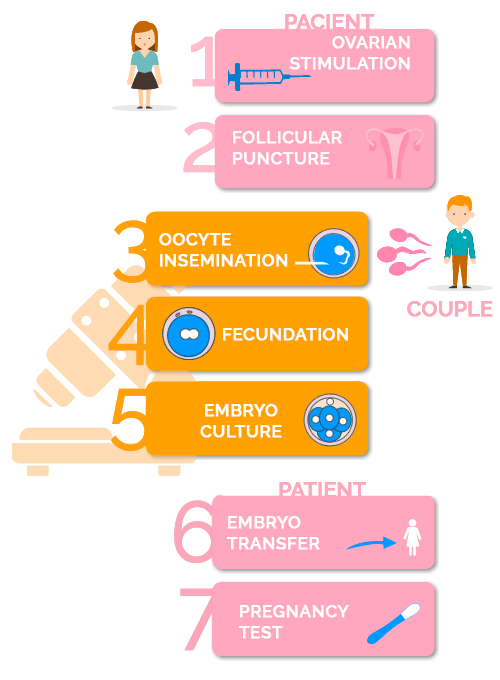In Vitro Fertilization with the couple’s semen

In vitro fertilization (IVF) with the couple’s semen is a technique by which the oocytes (immature eggs), once retrieved by follicular puncture, are fertilized in the laboratory by the couple’s sperm, with a semen sample able to optimize its fertilizing capacity. Those that are fertilized correctly are observed for several days until the moment when the best quality embryos are transferred to the maternal uterus. It is the most widely used assisted reproduction technique, achieving high pregnancy rates.
What is In Vitro Fertilisation (IVF) with the couple’s semen?

For whom is this technique indicated?
In Vitro Fertilisation with the partner’s semen ( IVF equivalent) is indicated for:
- Couples where the woman has obstructed or absent fallopian tubes.
- Couples where the woman has moderate or severe endometriosis.
- Couples where the woman has ovulatory problems.
- Couples where the woman is elderly.
- Couples where the man has mild-moderate alterations in seminal parameters (moderately decreased sperm count and/or motility).
- Couples that have failed previous Artificial Inseminations.
- Couples with unexplained infertility
The requirements for a couple to undergo in vitro fertilization and have the best chance of success are:
- The semen sample must present adequate count and motility parameters.
- The use of an ultrasound scan to rule out possible uterine malformations that could affect the implantation and development of the pregnancy. In addition, to guarantee a response to ovarian stimulation in order to retrieve a minimum of suitable oocytes for the performance of the technique.

